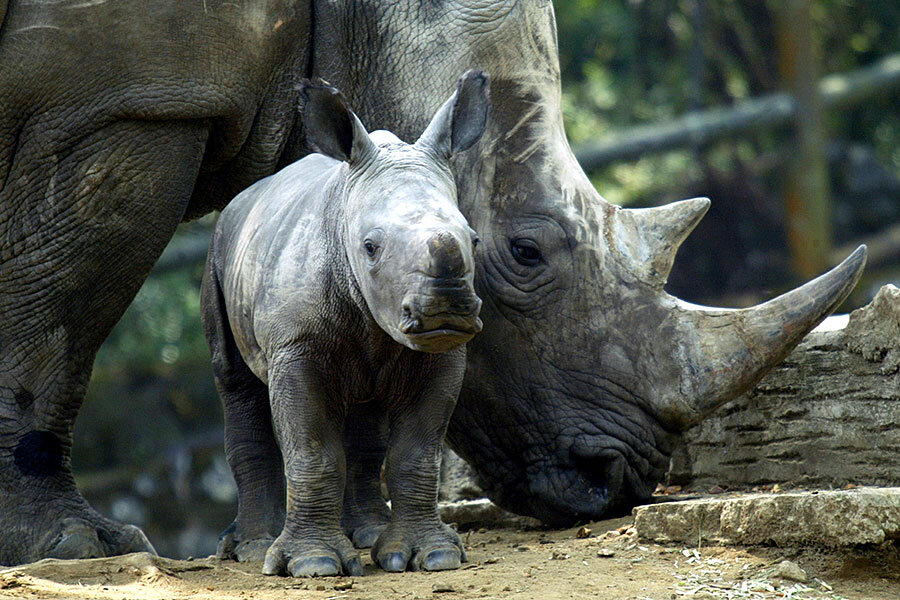Does baby video footage mean hope for rhinos?
Loading...
The small rhino walks along in front of its mother, exploring its home. The baby rhinoceros has no idea it is walking straight into a trap – a camera trap.
Conservationists were thrilled to get a few moments on camera with the newest members of the Javan rhino subspecies, and National Geographic published the video footage. A rhino calf is seen walking alongside its mother, with two others not seen. The threesome brings the Javan rhino population up to 60. All 60 Javan rhinos live in the wild in Ujung Kulon National Park in Indonesia.
"It is evidence that Javan rhinos are reproducing in the wild," Barney Long, conservation director at World Wildlife Fund, told National Geographic. WWF is a Washington, D.C.-based organization that works to "find solutions that save the marvelous array of life on our planet by applying the best science available and working closely with local communities," according to its website.
Since no Javan rhinos live in captivity, conservationists were glad to see the subspecies is reproducing on its own in the wild. The subspecies population is up to 60, from just 30 Javan rhinos when conservation efforts began.
"I think the key thing to remember is that rhinos are recovering,” Dr. Long told National Geographic. “The videos demonstrate that with the right conservation measures, you get more babies."
To save the species, the World Wildlife Fund has supported local anti-poaching groups. WWF also supports removal of the Arenga palm, an invasive species that is killing the food source for the rhinos, according to a statement. The Javan rhinos once roamed much of Asia, but the last of them outside of the Ujung Kulon park was killed in Vietnam in 2010.
Local groups in Indonesia are working to protect the small population. Yayasan Badak Indonesia – the Rhino Foundation of Indonesia – began working to save rhinos in the early 1990s and is supported by the Indonesian government, according to its website. The group does breeding programs, works with local law enforcement to apprehend poachers, and sponsors "Rhino Protection Units" that focus on preserving rhinos and the other species that live in their habitat.
Four Rhino Protection Units patrol the Javan rhino population, wrote Bill Konstant, an officer for the International Rhino Foundation.
"The RPUs are actively engaged in both efforts, working with field biologists to strategically place camera traps throughout the forest, and collecting dung samples for genetic analysis in the laboratory," Mr. Konstant wrote. "Given the small population sizes of both rhino species, as well as the fragmented nature of the remaining Sumatran rhino populations, their future will depend upon intensive management and knowledge of individual animals."
The Javan rhinos declined in number because of poaching and deforestation, National Geographic reports. The remaining rhinos are all clustered in the Indonesian wildlife park, right next to the active Anak Krakatau volcano. The park may be at peak capacity with 60 rhinos.
This is in contrast to the white rhino subspecies, for which desperate rhino enthusiasts are providing an armed guard and considering cross-breeding via in vitro fertilization, The Christian Monitor reported.








